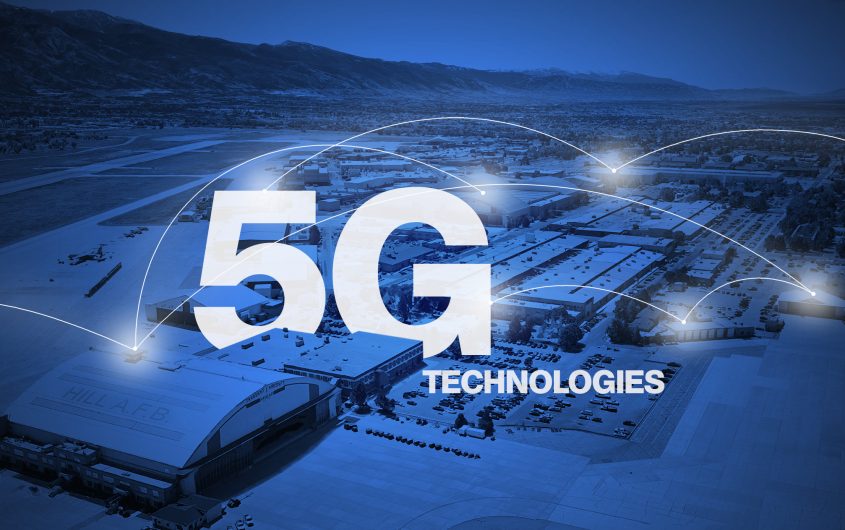
U.S. Air Force graphic by David Perry
O-RAN, 3GPP, and R&D Fund: The U.S. May Finally Have a Winning Strategy for the 5G Competition

Yixiang Xu
China Fellow; Program Officer, Geoeconomics
Yixiang Xu is the China Fellow and Program Officer, Geoeconomics at AGI, leading the Institute’s work on U.S. and German relations with China. He has written extensively on Sino-EU and Sino-German relations, transatlantic cooperation on China policy, Sino-U.S. great power competition, China's Belt-and-Road Initiative and its implications for Germany and the U.S., Chinese engagement in Central and Eastern Europe, foreign investment screening, EU and U.S. strategies for global infrastructure investment, 5G supply chain and infrastructure security, and the future of Artificial Intelligence. His written contributions have been published by institutes including The Chinese Academy of Social Sciences, The United States Institute of Peace, and The Asia Society's Center for U.S.-China Relations. He has spoken on China's role in transatlantic relations at various seminars and international conferences in China, Germany, and the U.S.
Mr. Xu received his MA in International Political Economy from The Josef Korbel School of International Studies at The University of Denver and his BA in Linguistics and Classics from The University of Pittsburgh. He is an alumnus of the Bucerius Summer School on Global Governance, the Global Bridges European-American Young Leaders Conference, and the Brussels Forum's Young Professionals Summit. Mr. Xu also studied in China, Germany, Israel, Italy, and the UK and speaks Mandarin Chinese, German, and Russian.
__
The COVID-19 pandemic has intensified the United States’ confrontation with China and has driven administration officials and members of Congress to find more effective ways to strengthen American advantage in the global 5G competition. For the several years, Washington has been waging a war on Huawei, China’s national champion in telecommunications equipment. The Trump administration accused the company of violating U.S. sanctions on Iran, placed it on an entity list to cut off its access to U.S. technologies, and pressured allies from Europe to the Pacific to ban Huawei’s equipment from their 5G networks.
But despite its tenacious efforts, the U.S. crusade on Huawei has not been very successful. The company’s share of the global telecom market continues to grow. Important U.S. allies including the UK and Germany refused to bar Huawei from participating in their national 5G infrastructure construction. The administration’s earlier ideas to build up U.S. 5G equipment vendors and support Huawei’s chief competitors Nokia and Ericsson did not receive enthusiastic support from the telecom industry. The U.S. government’s hardball approach seemed to have painted itself into a corner.
The problem is that the U.S. government made Huawei an effigy of its grievances toward China, supercharging the government’s response to the global 5G competition without a methodically thought-out strategy.
Knowingly or not, the Trump administration probably overestimated China’s technology capabilities.
To many allies, U.S. warnings of Chinese snooping through Huawei-built 5G networks always sounded more fantastical than factual. Knowingly or not, the Trump administration probably overestimated China’s technology capabilities. As a British intelligence report found, Huawei’s network software was sloppy and riddled with dangerous glitches. There are indeed security concerns, but likely not the kind U.S. officials predicted.
Huawei’s place on the U.S. commerce department’s entity list made life difficult for companies around the world that it does business with, diminishing their revenues while making them watch capacity buildup in China to accelerate the country’s drive for technology self-sufficiency. Uncertain about what technology or information their employees could share with Huawei to develop 5G standards, some U.S. technology companies stepped back from participating in meetings at international standard bodies such as the 3rd Generation Partnership Project (3GPP). Declining sales and dwindling influence over global tech standards do not exactly spell success.
Subsidizing Nokia and Ericsson or support for a buildup of domestic alternatives is also problematic because it misses a basic issue—5G telecom products are cheap and have low profit margins. Propping up cheap manufacturing with narrow financial returns does add more competition to Huawei, but it is probably not the best way to spend public funds.
Seeing Huawei’s success nurtured by favorable domestic policies, the U.S. administration was tempted to mimic China in order to compete with China. In doing so, many strategists overlooked America’s core competitive strengths—its efficient market economy, transparent governance, and open innovation system. Fortunately, recent developments signal a return to the tried-and-true method of U.S. government support for innovation without excessive market intervention.
Recent developments signal a return to the tried-and-true method of U.S. government support for innovation without excessive market intervention.
The U.S. Department of Commerce is reviewing a draft new rule that allows U.S. companies to participate in standards bodies where Huawei is also a member, enabling the government to pursue its national security concerns with companies like Huawei via the Entity List without the need to silence American voices in vital standards development efforts.
The Open Radio Access Network (O-RAN) approach is gaining traction with the U.S. government as 31 technology and telecommunications companies launched a new coalition aimed at pushing for open interfaces that enable a more competitive supplier ecosystem and advocating open source software and hardware reference designs. This approach would maximize the use of common off-the-shelf hardware and merchant silicon and minimizing proprietary hardware. This software-driven alternative relies on clear U.S. leadership in software design and could offer better and more secure 5G infrastructure while leaving the price-sensitive hardware competition to the global market.
These initiatives are being supported by members of the U.S. Congress. A bipartisan group of national security senators introduced a bill that would create a $750 million O-RAN fund to encourage the open-architecture, software-based research and development. A roster of government agencies would have input into the fund’s management, including Defense Advanced Research Project Agency (DARPA), whose expertise in collaborating with academic, industry, and government partners on research and development projects has delivered significant technologies that influenced many non-military fields, including mobile communication.
All these efforts will still be part of an extensive U.S. government campaign to do whatever it can in order to outcompete Huawei in the global 5G market and stay well ahead of China in technologies. But by focusing on doing what America does the best, the United States may finally have a winning strategy.








